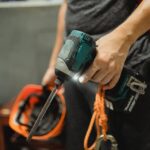Fast track construction is aimed at reducing overall project time, usually by overlapping design, permitting, and construction phases so that some tasks typically occurring sequentially are performed concurrently. This approach to construction may be necessary when clients want a quick completion, particularly on high-rise building projects.
Surety Bond Professionals is a family owned and operated bonding agency with over 75 years of experience. With access to a broad range of surety markets, our expert agents are ready to assist with all of your construction bond needs.
Fast Track Constructions Biggest Challenge
The greatest challenge in fast track construction is the degree of coordination and collaboration it takes to harness the talents and insights of all participants to optimize project results and maximize efficiency through all phases of design, fabrication, and construction. All key participants, including the owner, architect, general contractor, major subcontractors, and suppliers, are involved early in the project. This early involvement helps in aligning goals and expectations, identifying potential issues, and fostering a collaborative environment.
Building Information Modeling (BIM) and other advanced technologies are often used in fast track construction to facilitate collaboration, improve accuracy, and streamline project processes. Additionally, continuous, open, and honest communication provides the transparency needed to address issues and make adjustments as needed quickly.
Proven Tips to Support Fast Track Construction.
- Assemble a team with experience in fast track construction to manage the complexities and dynamic nature of the project. Provide training to other team members to ensure they are familiar with the fast track approach and its requirements.
- Clearly define the roles, responsibilities, and expectations of all parties involved. Include contractual incentives for meeting milestones and penalties for delays to keep the project on track.
- Engage with local authorities early in the process to understand permitting requirements and timelines. If possible, seek expedited permits to avoid delays.
- Architects involved in fast track projects must consider the construction time ramifications of every design decision they make. Chief among these decisions are those related to core design and the use of prefabricated pods.
- Keep the core design as simple as possible without compromising on structural requirements and safety standards. Complex designs can slow down construction and increase costs.
- Consider modular construction techniques for the core components. Prefabricating elements off-site can accelerate construction by reducing on-site assembly time.
- Choose readily available materials that are easy to work with. Additionally, consider materials that are lightweight yet strong to facilitate faster construction without compromising structural integrity.
- Standardize core components and details wherever possible to streamline construction processes. This includes standardized floor layouts, connection details, and construction methods.
- Explore jump forming for building the core structure rapidly and efficiently. The jump-form installed around the perimeter of the core defines the shape and dimensions of the poured concrete core. Due to its complexity, the jump-form is a long lead item and one of the earliest items required on site for the structure to progress. But before it can be ordered, structural drawings for every level must be frozen, which requires input from multiple disciplines.
- Consider using prefabricated pods, but be aware of the challenges they can present in high-rise construction, such as having to lower them by crane from the top of the completed core rather than inserting them from the side.
- Use Building Information Modeling (BIM) and other digital tools to optimize the design and construction process through better coordination, clash detection, and efficient project management. These tools can improve coordination among project teams and identify potential issues before they cause delays.
- Implement robust project management tools to track progress, manage resources, and facilitate communication. Ensure adequate allocation of labor, equipment, and materials to meet the accelerated schedule.
- Coordinate with subcontractors to ensure they are aligned with the fast track schedule and requirements.
- Plan logistics carefully to minimize material handling and transportation time. Efficient delivery schedules and on-site storage arrangements can help keep construction on track.
- Develop a detailed project schedule that identifies critical paths and overlaps design and construction phases. Set clear milestones and checkpoints to monitor progress and make necessary adjustments.
- Identify potential risks early in the project and develop mitigation strategies.
- Implement continuous quality control measures to ensure that the fast pace does not compromise the quality of work.
- Fast track construction ideally incorporates lean construction principles, focusing on minimizing waste and maximizing value. This includes practices like just-in-time delivery.
Fast Track Construction
While the exact timeframe reduction achievable through fast-track construction varies from project to project, fast-track methods can shorten construction timelines by 25% to 40% compared to traditional approaches. However, it’s essential to balance speed with quality, safety, and cost-effectiveness to ensure successful project outcomes.
Call Us Today
Our surety bond professionals will help you grow your revenue by maximizing your surety capacity. Call us today!





